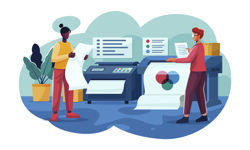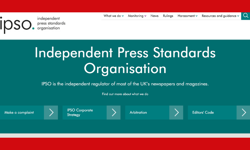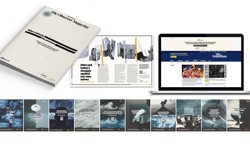No one’s predicting that digital editions of print magazines are going away any time soon. B2B publishers, in particular, continue to reap cost savings and other benefits from the format.
For instance, at the latest Digital Magazine Forum, VNU Business Publications VP, information marketing Joanne Wheatley reported that the company is employing digital editions both to increase titles’ reach cost-effectively and to enable timely delivery of high-priced news dailies like Hollywood Reporter (something that’s never been foolproof with print, despite spending up to $7 per copy for expedited delivery). The digital format also generates added revenue for dailies: HR is charging $299 per year for combined print / online access, versus $229 for print alone.
B2B
Still, even within the B2B sector, digital facsimiles of print products may be approaching saturation. The initially rapid growth of digital edition launches appears to be slowing. BPA Worldwide audited 30 titles with digital editions in first half 2003. That number jumped by 50% or more through 2004. But growth slowed to 24% in first half 05 (25 new digital titles), and to 6.5% in the second half (nine new digital titles), bringing the total to 139.
Further, although some IT titles have significant percentages of digital-only subscribers (a few are up in the 40% plus range), many B2Bs intentionally cap their percentages because of media buyer skepticism about digital readers’ open rates and exposure to ads.
Even those who’d like to develop more digital subscribers report that adoption rates are limited by the user experience. After two years of offering a digital edition as a paid add-on to its print product, Advertising Age had just 6,400 dual-format subscribers (on a total circ of about 712,000), according to Ad Age Group VP publishing and editorial director David Klein. AA had hoped to build international circulation with the format, but only about 8% of the pick-ups were from non-US readers. Instead, the magazine found digital editions useful mainly for enabling subscribers so inclined to access its weekly issues on Sunday evenings. Today, the print subscription offer includes the digital replica, as well as full access to the website content (access for non print subscribers is limited).
"A PDF-style digital edition can be a good value-added," summed up Klein. "But digital editions are just a useful tactical tool, not a strategy."
Consumer
On the consumer side, applications seem to be even more limited. "The consumer has largely rejected the digital facsimile as a replacement for print," said Peter Meirs, director of alternative media for Time Inc. While acknowledging that some systems are more user-friendly than others, he said that the need to use navigation tools, zoom in on content and so forth "puts a barrier between the user and the magazine that he or she wants to engage in. It’s like taking a magazine and putting a piece of glass in front of it."
Hachette Filipacchi US offers every one of its magazines on a digital platform, but the numbers of subscribers opting for the format are "miniscule," concurred VP, director of digital media Marta Wohrle. "I won’t be spending our time or money" on developing digital editions, she said.
Wohrle did note, however, that the technology has proven useful for custom publishing purposes - specifically, the ability to create and distribute sponsored one-shot publications more cost-effectively than is possible with print. And some consumer publishers use PDF versions as print subscription premiums or as means of sampling the magazine.
Meanwhile, there are more than a dozen digital edition systems vying for clients. "We need vendor consolidation - we need to have two or three vendors that can focus on research and development," said Gloria Adams, senior VP, audience development and book publishing for PennWell Corporation, long a major user of the technology.
Surrounding the Audience
In short, while B2Bs continue to use digital editions to best advantage within their useful boundaries, they and their consumer counterparts are mainly focused on offering rich media content and experiences accessible through PDA’s as well as PCs, and driving search traffic to their sites.
Time Inc is heavily engaged in developing video and other rich media formats, a case in point being the highly successful video and photo gallery extensions of its Sports Illustrated swimsuit edition, noted Meirs.
The Ad Age Group offers a growing number of videos, podcasts, blogs and online communities and RSS feeds, as well as enewsletters.
"We must surround readers - reach them on a 360-degree basis," said Klein. "Younger readers don’t necessarily want to read the print format, but we of course need to attract this audience. They go to Google first, so we have to make sure that Advertising Age comes up in those searches. The advertising and audience development issues are very, very different than they were even five years ago."
More on the ever-shifting digital scene in our next installment…
FEATURE
Digital Editions’ Growth, Utility Hitting Barriers
Has interest in digital editions peaked? Karlene Lukovitz detects some signs of waning enthusiasm amongst US publishers.










